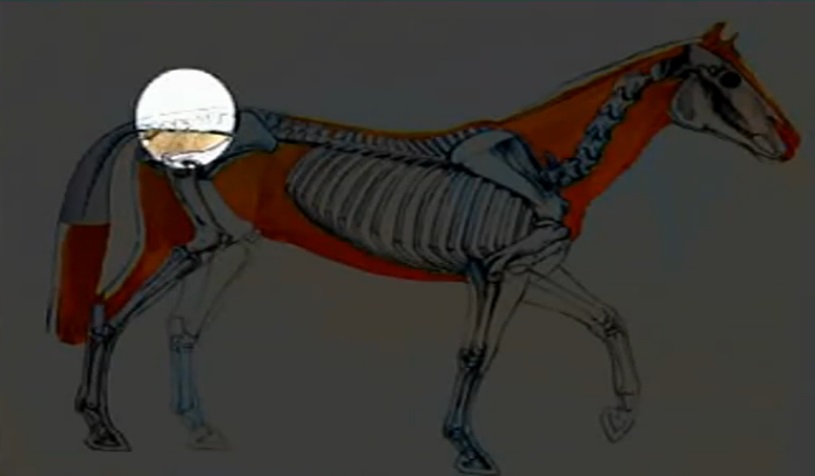
About the Sacroiliac Joint
It is not unusual for horses to develop SI pain as this joint handles tremendous force every day. "The sacroiliac joint is the intersection of sacrum, the section of the spine that underlies the croup, and the ilium, the largest of the bones that make up the pelvis. The sacrum is made up of five vertebrae fused solidly together to form a single unit. The ilium is shaped like a fat T, with a narrow shaft that flares out into a wide, flat crest. In conformation diagrams, the spot known as the point of the hip marks the outer branch of the crest, called the tuber coxae. (The true hip is actually farther down, at the base of the ilium shaft.) The inner branch (tuber sacrale) ends over the sacrum, at the top of the croup. This is the part of the bone involved in the SI joint. If you viewed a cross-section of the joint..., the two inner branches (one from the bone on the horse's right side, one from the left) would form an arch, with the sacrum in the cleft between them. Inside the joint, smooth cartilage covers the working surfaces of the bones. A close-fitting membrane encloses the joint and secretes lubricating fluid. Broad, strong ligaments [-] the dorsal (upper) and ventral (lower) SI ligaments [-] lash the bones together tightly. There's very little movement in the SI joint; it's designed for shock absorption and stability, not mobility. It has to be strong to hold up under the force of the horse's movement." Sacroiliac Joint A Closer Look ![]()
Dr. van Wessum's six indicators of SI disease: The DIY Test for SI Disease
- "Tracking narrow behind. He said affected horses often look like they are 'walking on a cord,' placing their hind feet on the same line in front of each other at the walk and, even more so, the trot.
- A lateral walk. Upon walking an affected horse in a serpentine pattern, the front and hind limbs on the same side move forward at the same time, similar to a pacing gait.
- Haunches in/out. If you longe an affected horse in a circle, you'll notice that the hind limbs don't follow the same circle as the front limbs, with the haunches making a smaller circle than the rest of the body.
- Asymmetric tail position. When an affected horse walks in a serpentine, he will lock his tail to one side.
- A 'bunny hop' canter. When affected horses canter, they lose their normal three-beat pattern, and the hind feet land together in a 'bunny hop' motion. ...
- Reduced lumbrosacral flexibility. Place one hand on the point of the hip and pull the tail toward one side, then repeat this on the other side. Also make the horse 'tuck under' by scratching each hamstring with a pointed object. A healthy horse's flexibility should be the same on each side."
This link is a comprehensive article on sacroiliac disease ![]() in horses.
in horses.
Equine Back Problems

